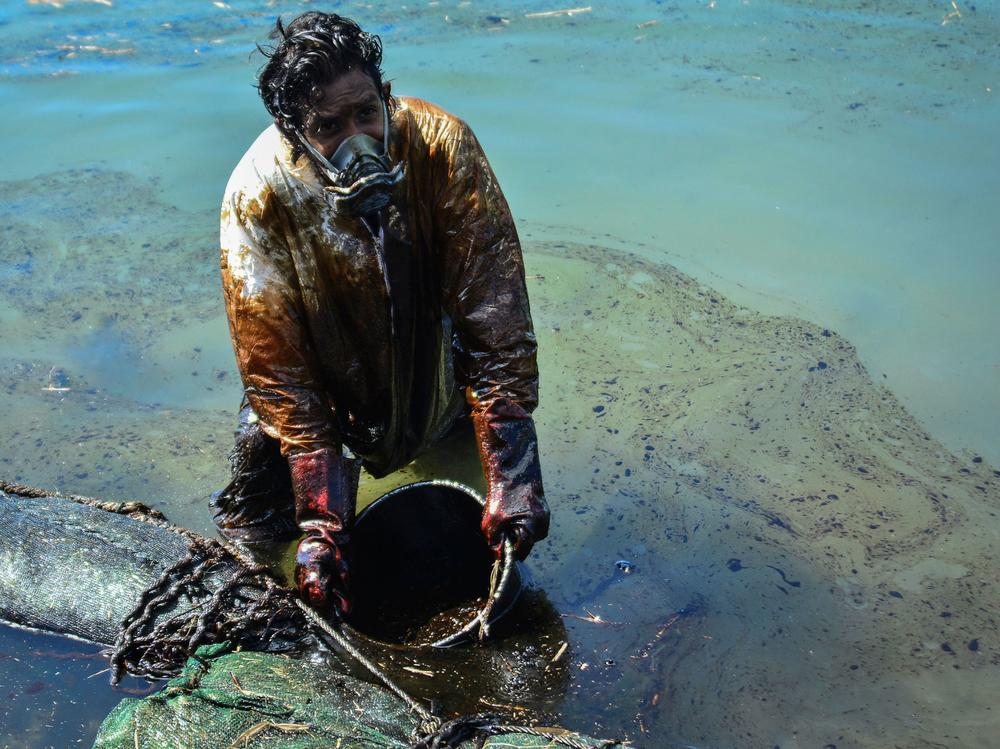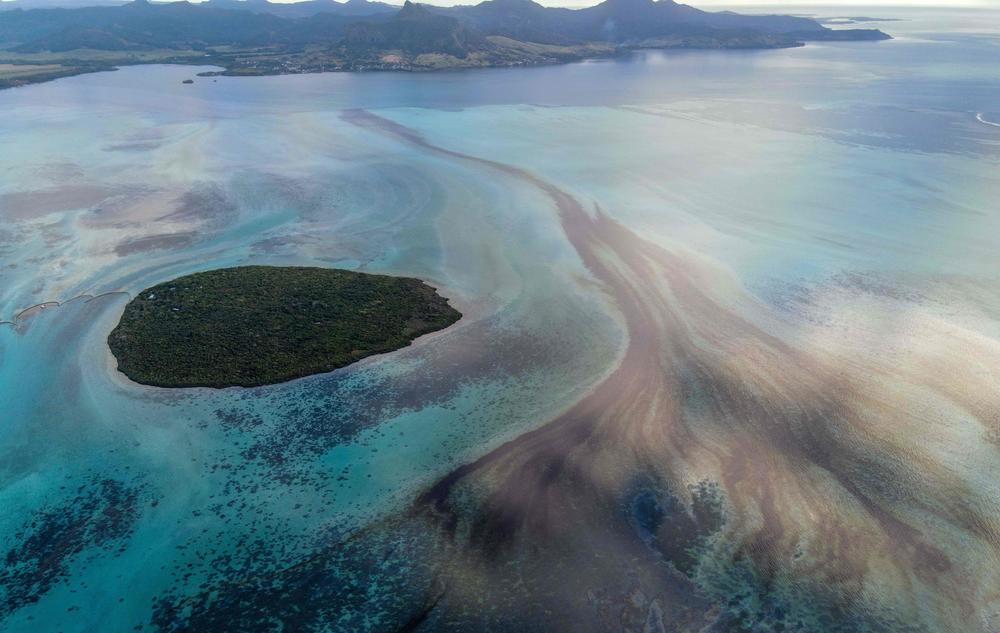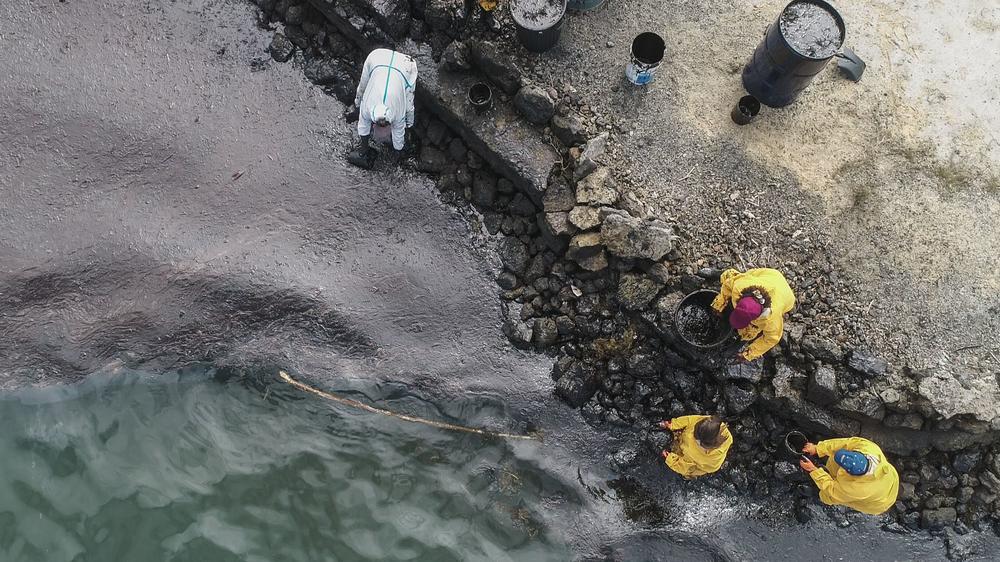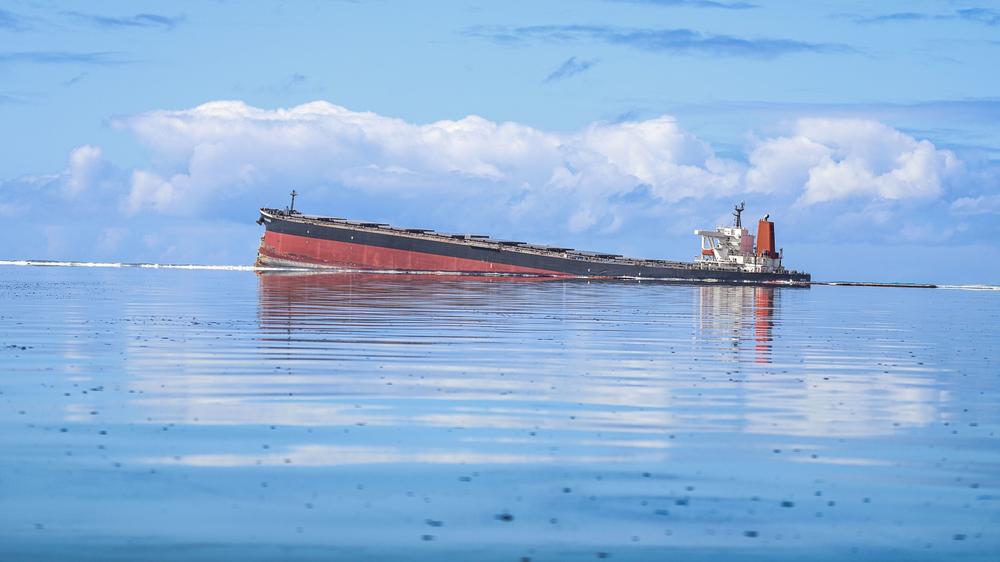Section Branding
Header Content
The Oil Spill At Mauritius Is A Disaster. And It Could Soon Get Worse
Primary Content
A Japanese cargo ship struck a reef off the coast of Mauritius more than two weeks ago and has now leaked more than 1,000 metric tons of oil into the pristine waters and unique ecosystems of the island nation.
Mauritius has declared a state of environmental emergency, and the French government has sent technical support to assist with the disaster response. In addition, independently-organized local volunteers have been working to clean up and protect beaches with improvised materials.
But an even bigger danger looms.
A crack inside the ship's hull has been growing, and government officials warn the entire ship could split in half, releasing all the oil remaining inside the vessel.
Efforts are underway to pump that oil out of the ship before it breaks apart. As of Tuesday, just over 1,000 metric tons of oil had been pumped out of the ship, while some 1,800 metric tons of fuel oil and diesel remain on board, according to the company that owns the ship.
The ship, the Wakashio, was a cargo ship, not an oil tanker, carrying 4,000 metric tons of fuel to power its engines (in comparison, supertankers can carry hundreds of thousands of metric tons of oil.) However, any oil spill larger than 700 metric tons is classified by industry groups as a large spill, and this spill has already released more oil than the combined total from every tanker spill documented in 2019.
Mauritius has declared a state of environmental emergency, and the French government has sent technical support to assist with the disaster response.
The Mauritian government has urged residents to stay home and leave the clean-up to authorities, the BBC reports, but residents have organized themselves anyway and assembled home-made oil booms — floating barriers to contain and absorb the toxic spill.
Reuters reports that sugar cane leaves, plastic bottles and human hair (cut off and donated by residents) are being sewn into makeshift booms.
"People have realized that they need to take things into their hands. We are here to protect our fauna and flora," environmental activist Ashok Subron said, according to AFP.
Subron told a local news outlet the collective action by everyday citizens demonstrated "the failure of the state," and other residents are angrily asking why action wasn't taken sooner to prevent this unfolding disaster.
"The authorities did nothing for days," Fezal Noordaully, a taxi driver from a coastal village in Mauritius, told The Guardian. "Now they are but it's too late."
When the Wakashio initially ran aground on July 25, its hull was intact and no major oil spill was detected. A Dutch company was brought in to refloat the ship and prevent spills.
But late last week, oil began to escape from the ship's tanks; the ship's owners issued a statement blaming bad weather and rough seas for the breach. The vessel's operators acknowledged "the regretful harm to the beautiful nature in Mauritius."
The island nation of Mauritius is located east of Madagascar in the Indian Ocean. It's home to a number of endemic species, or plants and animals that live nowhere else — from the pink pigeon, recently saved from extinction, to the blue-tailed day gecko, which pollinates a rare flower that only has 250 plants remaining.
The Mauritian Wildlife Foundation, which is dedicated to protecting endangered plants and animals that exist only in Mauritius, says it has helped lay booms to protect the Ile aux Aigrettes nature preserve as well as protected wetlands on the main island.
But the key challenge is stop the flow of oil, the group says; until the source of the leak is addressed, shoreline clean-up will accomplish little.
In addition to environmental devastation, the spill could have "dire consequences for Mauritius' economy, food security and health," Greenpeace Africa warns. Tourism is an important part of the economy and had already taken a hit from the coronavirus pandemic.
Copyright 2020 NPR. To see more, visit https://www.npr.org.




